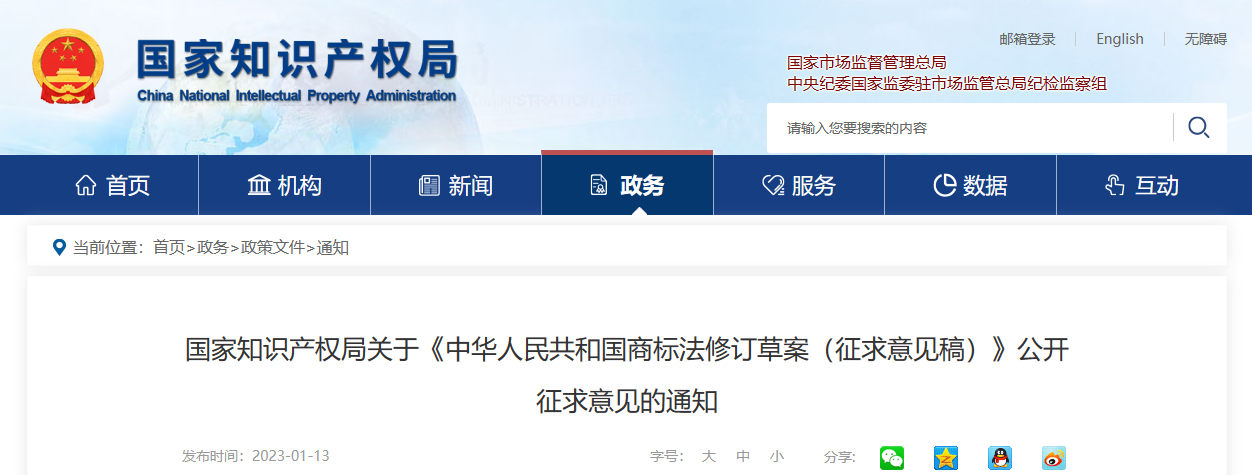|
Current Trademark Law |
Draft Amendments |
|
Article13.1 A holder of a trademark that is well known by the relevant public may, if he holds that his rights have been infringed on, request for well-known trademark protection in accordance with this Law. |
Article 10 A holder of a trademark that is well known by the relevant public may, if he holds that his rights have been infringed on, request for well-known trademark protection in accordance with this Law. The protection of a well-known trademark follows the principles of case-by-case examination, passive protection, and confirmation upon application. The scope and strength of protection of a well-known trademark shall be appropriate to the distinctive features and reputation of the trademark. The well-known status of a trademark shall be confirmed as a fact that needs to be ascertainedin dealing with a trademark-related case upon request by the party concerned. The following factors shall be taken into consideration comprehensively in the recognition of thewell-known status of a trademark: (1)the recognition degree of the trademark among the relevant public; (2)the duration, manner, and geographical scope in which the trademark has been in use; (3)the duration, extent and geographical scope of all publicity operations carried out for the trademark; (4)the status of the trademark’s domestic and foreign applications and registrations; (5)the records of protection of the trademark, especially its protection as a well-known trademark; (6)the value of the trademark; and other factors making the trademark well-known. |
|
(1)the recognition degree of the trademark among the relevant public; (2)the duration in which the trademark has been in use; (3)the duration, extent and geographical scope of all publicity operations carried out for the trademark; (4)the records of protection of a well-known trademark provided for the trademark; and (5)other factors making the trademark well-known. |
|
|
Article 13.2 and 13.3Where the trademark of an identical or similar goods is a reproduction, imitation, or translation of another person’s well-known trademark not registered in China and is liable to cause the public confusion, no application for its registration may be granted and its use shall be prohibited. Where the trademark of a |
Article 18 Where the trademark being used or applied for registration is a reproduction, imitation, or translation of another person’s well-known trademark not registered in China in respect of identical or similar goods, and is liable to cause the public confusion, its use shall be prohibitedand no application for registration may be granted. Where the trademark being used or applied for registration is a reproduction, imitation, or translation of another person’s well-known trademark not registered in China in respect of dissimilar goods, and it misleads the public so that the interests of the holder of the registered well-known trademark are likely to be impaired, its use shall be prohibited and no application for its registration may be granted. Where the trademark being used or applied for registration is a reproduction, imitation, or translation of another well-known trademark known to the general public, and is sufficient to cause the relevant public to believe that the trademark is closely connected with the well-known trademark, thus diminishing the distinctive characters of the well-known trademark, damaging the reputation of the well-known trademark, or unfairly exploiting the reputation of the well-known trademark, its use shall be prohibited and no application for its registration may be granted.
|
